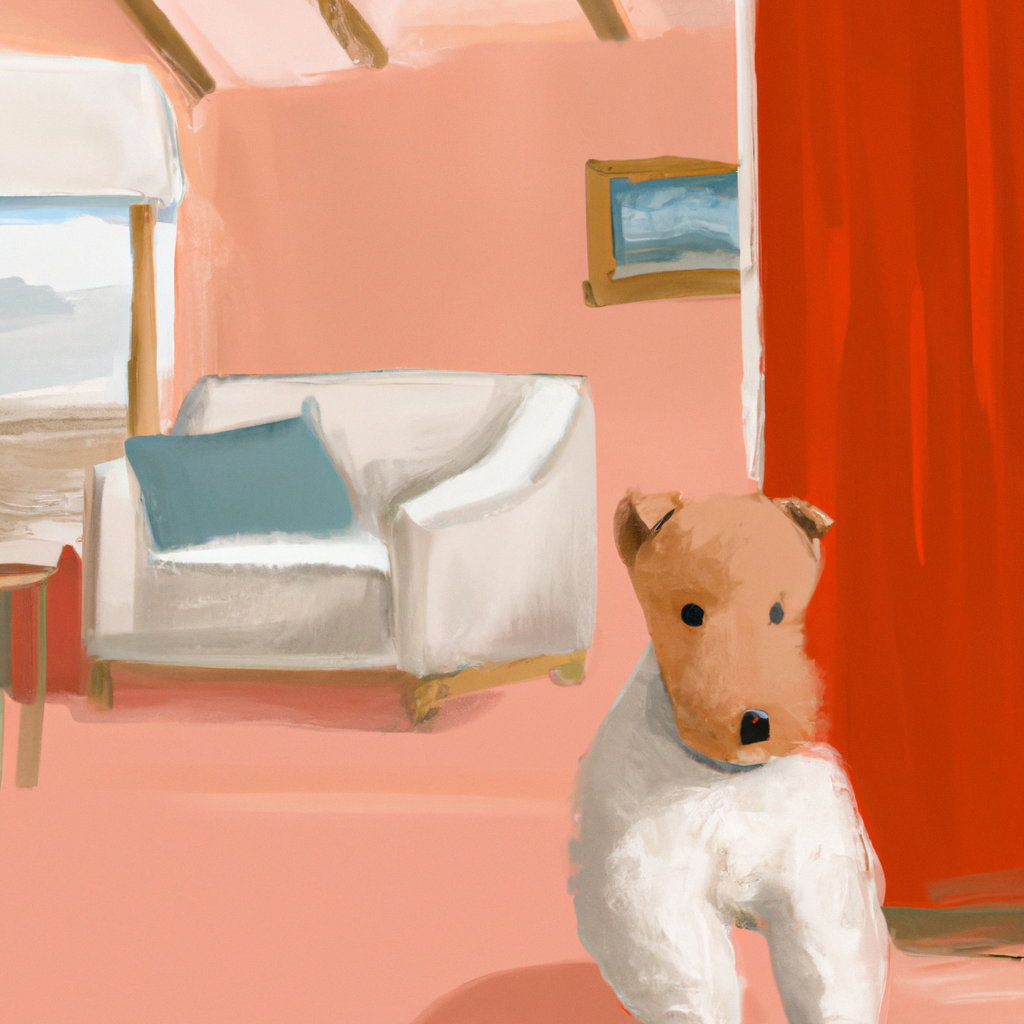Introduction: The Flea Fiasco

So, you’ve got a flea infestation in your house. It’s a real head-scratcher, isn’t it? You might think you’ve got it under control, only to find these little jumpers popping back up like they’ve got a vendetta against you. Fleas are stubborn little creatures, thriving in the nooks and crannies of your home. They ride in on your pets, set up shop, and before you know it, you’ve got a whole flea circus under your roof.
Picture this: you’re sitting on your couch, sipping your morning coffee. You notice your dog scratching more than usual. You dismiss it—maybe it’s just dry skin or a random itch. But then you spot it—a tiny flea hopping onto your sock. It’s like discovering a tiny uninvited guest—and not the good kind. Suddenly, the reality of a flea infestation hits you.
But don’t sweat it. You’re not alone. Many have fought the good fight against these pesky invaders. This is about how you get rid of fleas in your house without losing your mind. Ready to dive in? Let’s tackle this flea fiasco together.
Understanding the Flea Life Cycle
You think you know fleas? Think again. These little critters have a life cycle that’s like a bad soap opera—full of drama and plot twists. Understanding the flea life cycle stages is key to kicking them out for good.
Fleas start as eggs, laid in your pet’s fur. These eggs fall into your carpet, bedding, and anywhere your pet roams. Next up, they hatch into larvae, tiny worm-like creatures that feed on—you guessed it—flea dirt. Charming, right? Then, they cocoon themselves as pupae, waiting for the perfect moment to emerge as adult fleas.
Here’s the kicker—pupae can wait up to a year to hatch. They bide their time until conditions are just right. So, even if you think you’ve wiped them out, those sneaky pupae might just be lying in wait.
It’s not just about killing the adult fleas. You need a plan to tackle every stage of this life cycle. Once you get the hang of this, you’re halfway to reclaiming your home.
Spotting the Signs: Is Your Home a Flea Motel?
How do you know if your home’s become a flea motel? It’s not like they leave a reservation card. Spotting the signs of fleas in your house can be tricky. But once you know what to look for, it’s like reading a mystery novel with a magnifying glass.
First off, watch your pets. Are they scratching or biting more than usual? Fleas love to feast on our furry friends. Check their fur for small, dark specks—flea dirt. If you find some, it’s time to get serious about flea treatment for pets.
Next, check your own skin. Those itchy red bites, usually around your ankles, are a dead giveaway. Fleas aren’t picky—they’ll bite humans if they get the chance.
And of course, keep an eye out for the fleas themselves. They’re tiny, but they move fast. If you see one hopping around, there’s likely more where that came from.
So, how to detect fleas at home? Trust your instincts. If it seems like fleas, it probably is fleas. Time to roll up your sleeves and get to work.
Pet Treatment: The First Line of Defense
Alright, let’s talk about the first line of defense—your pets. They’re not just innocent bystanders in this flea saga. They’re the main event, the star of the show. Flea treatment for pets is crucial.
There are loads of options out there. But remember, not every treatment is pet-friendly. You want something that keeps your furry buddy safe while kicking fleas to the curb. Look for pet-friendly flea treatments—ones recommended by your vet.
Think of it as a spa day for your pet, minus the cucumbers on the eyes. You might need to bathe them with a flea shampoo, or maybe use a topical treatment. It’s a bit of work, sure, but it’s worth it to see your pet comfortable and flea-free.
Your pet’s like your partner in this battle against fleas. Keep them treated, and you’ve got a sidekick in your mission to rid your house of these pesky intruders.
Vacuuming: Your New Best Friend
Now, let’s talk about vacuuming. It’s not glamorous, but it’s your new best friend in this flea saga. Vacuuming to remove fleas isn’t just about cleaning up—it’s about survival.
Get into the habit of vacuuming every day. Fleas love to hide in carpets, rugs, and upholstery. Your vacuum is like a little tornado, sucking up eggs, larvae, and adult fleas.
But here’s a tip—after vacuuming, empty the bag or canister outside. Fleas are tough cookies. They can crawl out and set up shop again if you’re not careful.
Think of vacuuming as your daily ritual. It’s a small act, but it makes a big difference. You’ll be amazed at how effective it is.
So, there you have it—a guide to tackling fleas in your home. It’s a battle, no doubt, but you’ve got the tools and the know-how. Keep at it, and you’ll win this war. Thanks for sticking with me through this flea escapade. You’re well on your way to a flea-free home. Now, go grab that vacuum—your new best friend awaits.
The Hidden Life Cycle of Fleas: Understanding the Enemy
So, you’ve got fleas in your house. Lovely, huh? These little buggers are like that annoying song you can’t get out of your head. But before you can boot them out, you gotta understand their game plan. Fleas live in stages. Yeah, they’re not just jumping around for fun. They start as eggs, then larvae, pupae, and finally, adults. It’s like a twisted little flea puberty. Knowing these flea life cycle stages is key to beating them at their own game. If you think you got rid of them just ’cause you don’t see them anymore—ha! Think again. They might be lurking, waiting to pounce when you least expect it.
Natural Home Remedies: Fighting Fleas Without Chemicals
Let’s face it, nobody wants to spray harsh chemicals all over the place. Especially if you’ve got kids or pets running around. So, let’s talk about some homemade flea remedies for the house. You know, the kind that won’t make you cough like you’ve swallowed a cactus. One trick is using diatomaceous earth. Sounds fancy, right? But it’s just this natural powder that makes fleas dry up and die. Sprinkle it like pixie dust where fleas might hang out. And how about a bit of lemon spray? Fleas hate citrus. Boil a few lemons, let it sit overnight, and spray away. It’s like giving your home a fresh zing while sending those fleas packing.
Vacuuming Strategies: The Unsung Hero in Flea Control
Vacuuming might not be your idea of a good time, but boy, is it a hero in disguise. A few rounds with the best vacuum for fleas, and you’re on your way to a flea-free home. Don’t just give it a half-hearted go. You gotta get into all those nooks and crannies. Under the couch, in the corners, even that weird spot behind the TV where dust bunnies have parties. The vibrations from vacuuming can wake up those sneaky flea pupae, making them easier to catch. It’s like the ultimate flea wake-up call. But remember, empty the vacuum bag or canister right after. Or those fleas might just hop right back out and laugh in your face.
Laundering and Linens: More Than Just Hot Water
When it comes to washing flea-infested linens, hot water is your best friend. But it’s not just about cranking up the heat. You need to wash everything—sheets, blankets, pet beds, even those throw pillows you think are safe. Fleas love soft, cozy spots. And don’t skimp on the dryer time. The heat from drying is like a flea’s worst nightmare. It’s a bit of work, but the result? A home that’s a lot less itchy. Oh, and don’t forget to clean the laundry area itself. Fleas can drop off and make a new home there if you’re not careful.
The Role of Pets: Keeping Furry Friends Flea-Free
Now, let’s talk pets. They’re like the accidental chauffeurs for fleas. It’s a one-way ticket into your house. So, flea prevention for pets is a must. Regular baths with a gentle flea shampoo can do wonders. But hey, don’t bathe Fido every day—he’s not a dish rag. And keep up with those vet-recommended flea treatments. Natural flea control methods work too. A little apple cider vinegar in your pet’s water can make them less tasty to fleas. But consult your vet first, okay? They know their stuff. After all, pets are family. You don’t want them scratching themselves silly.
Thanks for hanging in there with me. Fleas aren’t the end of the world, though they might make it feel like it at times. With a bit of elbow grease and patience, you can show those fleas who’s boss. Here’s to a flea-free home and a little peace of mind. Keep fighting the good fight.
Natural Remedies to Tackle Fleas
Alright, let’s dive right in. Fleas—the bane of our existence. If you’ve ever been caught in their tiny, itchy claws, you know the desperation of trying to evict these freeloaders from your home. You might think you need to reach for the nearest chemical concoction, but hold on a second. Natural flea remedies can be just as effective, and you probably already have them lying around.
Picture this: a kitchen filled with potential flea-fighters. Lemon juice, vinegar, and even that old baking soda you’ve been ignoring. These aren’t just ingredients for a salad dressing—no, sir. A little lemon juice spritzed on your pet’s coat can send fleas packing. Vinegar in your pet’s water dish? It’s like kryptonite for those little jumpers. And baking soda sprinkled over your carpet—then vacuumed up—can do wonders. You’d be surprised how much you can do with what’s already in your pantry.
Now, I know what you’re thinking. “Anna, these sound too simple!” Maybe, but simplicity is often the best approach. Plus, these methods are easy on the wallet. No need to spend a fortune on treatments when you can get creative at home. It’s about taking back control, one kitchen staple at a time. And hey, if it doesn’t work, at least your house will smell like a lemon orchard.
The Role of Regular Cleaning
You ever notice how cleaning is like that friend who always wants to help, but you never want to hang out with? Yeah, me too. But when it comes to getting rid of fleas in your house, regular cleaning for flea removal is your best ally. These little critters thrive in the chaos of dust and debris. So, the more you clean, the less they stick around.
Think of your vacuum cleaner as your new best friend. It sucks up not just fleas, but their eggs and larvae too. And trust me, those eggs are sneaky little devils. They hide in the fibers of your carpet, waiting for the right moment to hatch. Regular vacuuming is like a workout for your home—minus the gym membership. It’s sweat-free and pretty satisfying when you see the results.
Don’t forget about washing your pet’s bedding. Fleas love to make themselves at home where your furry friend sleeps. A hot wash can do wonders, sending them straight down the drain. Regular cleaning isn’t just a chore—it’s a strategy. One that keeps your space flea-free and your sanity intact. Just remember, consistency is key. Skip a day, and those fleas might think you’re rolling out the welcome mat.
Flea-Proofing Your Home for Good
Imagine a world where fleas take one look at your house and decide to move on. Sounds like a dream, right? Well, it’s not impossible. With a few flea-proofing home strategies, you can make your space as uninviting as a snowstorm in July. It takes a bit of effort, but the payoff is worth it.
Start by sealing up those entry points. Fleas are like tiny vampires—they need an invitation, or in this case, a crack or gap to slip through. Check your doors and windows. A little caulk or weather stripping can go a long way. Next, focus on your yard. Keep the grass trimmed and the bushes neat. Fleas love to hide in the foliage, waiting for a chance to hitch a ride inside.
And don’t forget your pets. Regular grooming and flea prevention tips can keep them from bringing in unwanted guests. A flea collar or a natural repellent like rosemary oil can be your ally. It’s all about creating a hostile environment for fleas, so they don’t even think about settling in.
The Hidden Costs of Ignoring Fleas
Now, let’s talk about the elephant in the room—the hidden flea infestation costs. Ignoring fleas doesn’t just cost you in comfort. It hits your wallet, and hard. It’s like leaving a leaky faucet running—it adds up before you know it.
First, there’s the vet bills. Fleas can cause all sorts of problems for your pets, from skin irritations to tapeworms. And those trips to the vet aren’t cheap. Then there’s the pest control services. Once fleas get out of hand, you might need to call in the professionals. And let’s not forget about your home itself. Fleas can cause damage, leading to costly repairs or even replacements.
It sounds dramatic, but ignoring fleas might mean buying new furniture, or worse, fumigating your entire home. Yikes, right? So, when you see a flea, don’t ignore it. Act fast. Because the costs of flea infestations aren’t just financial—they’re emotional too. Nobody wants to live in a flea-infested nightmare.
Staying Vigilant: Monitoring Your Success
Congratulations! You’ve declared war on fleas and emerged victorious. But don’t pop the champagne just yet. Staying vigilant is key to maintaining your flea-free domain. Monitoring flea control success is like playing a game of hide and seek—except you didn’t sign up for it.
Keep an eye on your pets. Check for any signs of fleas, like excessive scratching or tiny black specks in their fur. Regular grooming can help catch any new invaders before they become a problem. And don’t forget about your home. Continue your cleaning routine. It’s not just about eliminating fleas—it’s about preventing them from coming back.
Use traps or flea combs to keep tabs on the situation. They can help identify any new infestations early. It’s a bit like being a detective, but without the trench coat. Stay one step ahead, and those fleas won’t stand a chance.
In the end, it’s about persistence. You’ve put in the work, and now it’s time to reap the rewards. Keep at it, and your home will remain a sanctuary for you and your pets—not a playground for fleas. Thanks for sticking with me on this journey. You’ve got this. Your home is counting on you, and so am I.
Quick Takeaways:
How do you get rid of fleas in your house? Ah, the eternal question. Fleas are like those annoying jingles that get stuck in your head—they just won’t go away. But fear not, because even if you’re knee-deep in a flea infestation in your home, there are ways to tackle these tiny invaders. First, know your enemy. Fleas have life cycle stages—egg, larva, pupa, adult. Sounds like a bad horror movie, right? But understanding these stages helps you plan an attack.
Signs of fleas in the house aren’t subtle. If your pets are scratching like they’re auditioning for a flea circus, that’s a pretty clear sign. Another clue? Those little dark specks on your pet’s bed—flea dirt. Time for action. Start with flea treatment for pets. You want something pet-friendly, of course, because Fido and Whiskers deserve the best. Vacuuming to remove fleas is a must. It’s not glamorous, but it works. Get a good one—the best vacuum for fleas you can afford. And wash flea-infested linens like you’re in a laundry marathon.
How to detect fleas at home is easier than you think. White socks on carpet? Fleas hop on—voilà, instant evidence. Homemade flea remedies for the house can be a lifesaver—or at least a cost saver. Think lemon sprays or vinegar. Natural flea control methods can be your secret weapon, from diatomaceous earth to essential oils. But don’t forget about flea prevention for pets. Keep them groomed, and consider a flea collar or oral treatment.
Stay on top of regular cleaning for flea removal. Don’t let up even after they’re gone. Flea prevention tips can help keep your home flea-free. It’s not just about getting them out; it’s about keeping them out. Monitor your efforts to make sure those pesky critters don’t sneak back. Stick to these flea-proofing home strategies, and you’ll be the hero of your own flea-free saga.
FAQs:
1.
How do you get rid of fleas in your house without using chemicals?
Going natural is a solid choice for those who want to keep chemicals at bay. Start with vacuuming to remove fleas—it’s your best friend. Sprinkle some diatomaceous earth on carpets and pet bedding. This fine powder dehydrates fleas at all life cycle stages. Essential oils like lavender and peppermint can repel these pests. Make a spray with water and a few drops of oil. Trust me, your home will smell better, too.
2.
Can fleas in your house affect your health?
While fleas are more of a nuisance than a health crisis, they can still cause problems. Flea bites can be itchy and lead to allergic reactions in some folks. If you’ve got pets, they can suffer from flea allergy dermatitis. There’s even a chance of catching flea-borne illnesses, though it’s rare. So, getting rid of fleas in your house does more than just save your sanity.
3.
What are the hidden costs of a flea infestation in homes?
Ignoring a flea infestation is like ignoring a leaky roof. Costs pile up quicker than you think. There’s flea treatment for pets, which isn’t cheap. Then, pest control services might be needed if things get out of hand. Let’s not forget the cost of replacing flea-infested furniture or carpets. Regular monitoring and flea prevention tips can help you avoid these expenses.
4.
How do you get rid of fleas in your house permanently?
There’s no magic wand, but consistency is key. Start with a thorough cleaning. Vacuum regularly and wash flea-infested linens. Use pet-friendly flea treatments and keep your pets clean. Natural flea remedies can help maintain a balance. Keep an eye on your success—monitor areas where fleas tend to hide. A flea-free home isn’t a one-time job; it’s a lifestyle.
5.
What are the best flea prevention tips for pet owners?
Keeping fleas at bay starts with your pets. Regular grooming is essential. Consider using a flea comb to catch any hitchhikers. Pet-friendly flea treatments, like topical solutions or oral meds, can be effective. Keep your yard tidy because fleas can come in from outside. Stay vigilant and regularly check your pets for signs of fleas. Consistency is your best defense.
Conclusion:
So, how do you get rid of fleas in your house and keep them out for good? It’s more about vigilance than anything else. You’ve got to stay on top of your game—cleaning, monitoring, and treating your pets. It might not be glamorous, but it’s necessary. Those fleas are persistent little buggers, and they’ve got no plans of packing up and leaving without a fight.
You’ve got the tools and knowledge now. You’ve got this. Keep your home and pets safe from these tiny invaders. Don’t let them take over your sanity or your wallet. Thanks for sticking it out with me on this flea-filled journey. Remember, the battle may be tough, but victory tastes sweet—and flea-free. Here’s to a peaceful, flea-free home. Good luck!
References:
1. [WebMD – Kill Fleas at Home](https://www.webmd.com/pets/kill-fleas-at-home)
2. [CDC – Flea Treatment](https://www.cdc.gov/fleas/section-name/index.html)
3. [EPA – Controlling Fleas and Ticks Around Your Home](https://www.epa.gov/pets/controlling-fleas-and-ticks-around-your-home)
4. [Healthline – How to Get Rid of Fleas](https://www.healthline.com/health/healthy-home-guide/how-to-get-rid-of-fleas)
Our solution eradicates fleas on contact without harmful chemicals, ensuring a safe environment for your pets and family. Easy to use and highly effective, SayByeBugs helps you maintain a flea-free home. Learn more and order today at SayByeBugs.com
Our solution eradicates fleas on contact without harmful chemicals, ensuring a safe environment for your pets and family. Easy to use and highly effective, SayByeBugs helps you maintain a flea-free home. Learn more and order today at SayByeBugs.com








